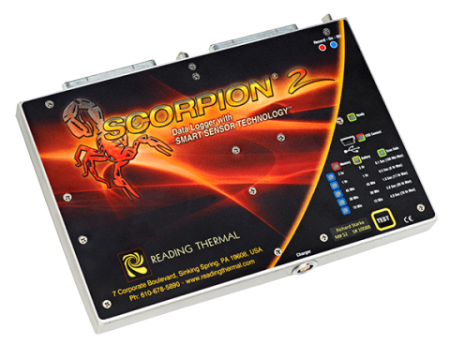Whether you’re baking bread, cookies, crackers, or cakes, delivering a uniform product every time helps build trust with your customers and keeps your production line moving efficiently. One of the most common challenges bakers face is underbaking. It can lead to soggy centers, collapsed structures, and even safety concerns due to unachieved kill steps. Fortunately, thermal profiling for baking operations from Reading Thermal takes the guesswork out of your process.
Understanding the Risk of Underbaking
Underbaked goods aren’t always easy to spot until it’s too late. From the outside, products may look golden brown and ready to go, but internally, the core temperature may not have reached the threshold necessary to fully set starches, denature proteins or eliminate harmful microorganisms. This is especially true for products with higher moisture content or thicker density. When products leave the oven underbaked, you face the risk of customer complaints, product recalls and wasted time and ingredients.
Thermal profiling gives you real-time insight into what’s happening inside your oven and, more importantly, inside your product.
How Thermal Profiling Works
Thermal profiling involves measuring and recording the internal temperature of a product as it moves through the oven. It captures detailed data on how heat is transferred and distributed over time. With the help of advanced tools like Reading Thermal’s SCORPION® 2 Profiling System, you can gather critical information on temperature, heat flux, air velocity and humidity – all of which impact the final bake.
This product creates a thermal “map” of the baking process. This map shows you whether the product is hitting target internal temperatures and for how long. That’s a big deal because hitting the right temperature for the right amount of time ensures complete gelatinization, protein denaturation and microbial kill. If you’re not seeing those conditions met, you know adjustments need to be made.
Taking the Guesswork Out of Oven Adjustments
One of the greatest benefits of thermal profiling is that it empowers bakers to make informed, data-driven decisions. Instead of guessing why a batch came out doughy or underbaked, you can look directly at the profile and see what happened. Was there a dip in heat in the middle zone of your tunnel oven? Did the air velocity drop below the threshold needed for even heat transfer? Was the humidity level too high, preventing proper moisture evaporation?
With tools like Reading Thermal’s SCORPION® 2 Temperature Sensor Array, you’re not flying blind. You’re backed by precise, reliable measurements that help you fine-tune your oven settings. You might need to adjust zone temperatures, increase bake time or modify airflow patterns. Whatever the fix, you’ll be doing it based on real-world data, not trial and error.
Real-World Impact for Commercial Bakeries
Using thermal profiling to prevent underbaking isn’t just about improving quality – it’s also about protecting your brand, reducing waste, and boosting efficiency. For example, identifying a zone in your oven that consistently runs cooler than the rest allows you to correct it before it affects hundreds of pounds of product. That’s a huge win for cost control and consistency.
Reading Thermal’s systems are designed for continuous use in high-output environments, making them ideal for commercial bakeries. With software that makes data easy to analyze and interpret, even small baking teams can gain big insights. Plus, our technology meets the strict standards required for kill-step validation, which helps ensure food safety compliance.
Find out more about solutions for thermal profiling for baking operations from Reading Thermal by calling 610-678-5890 or contacting us online.

